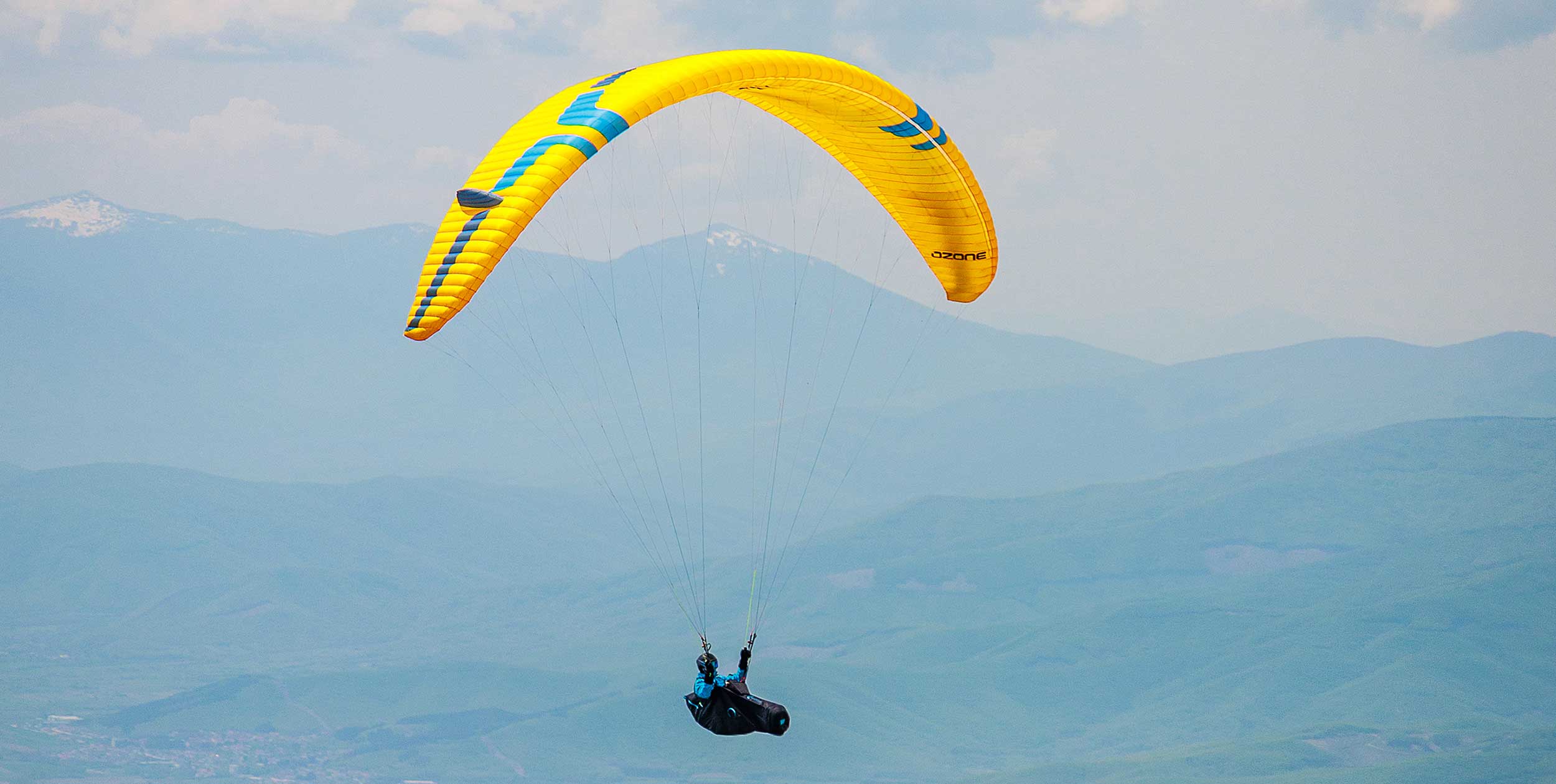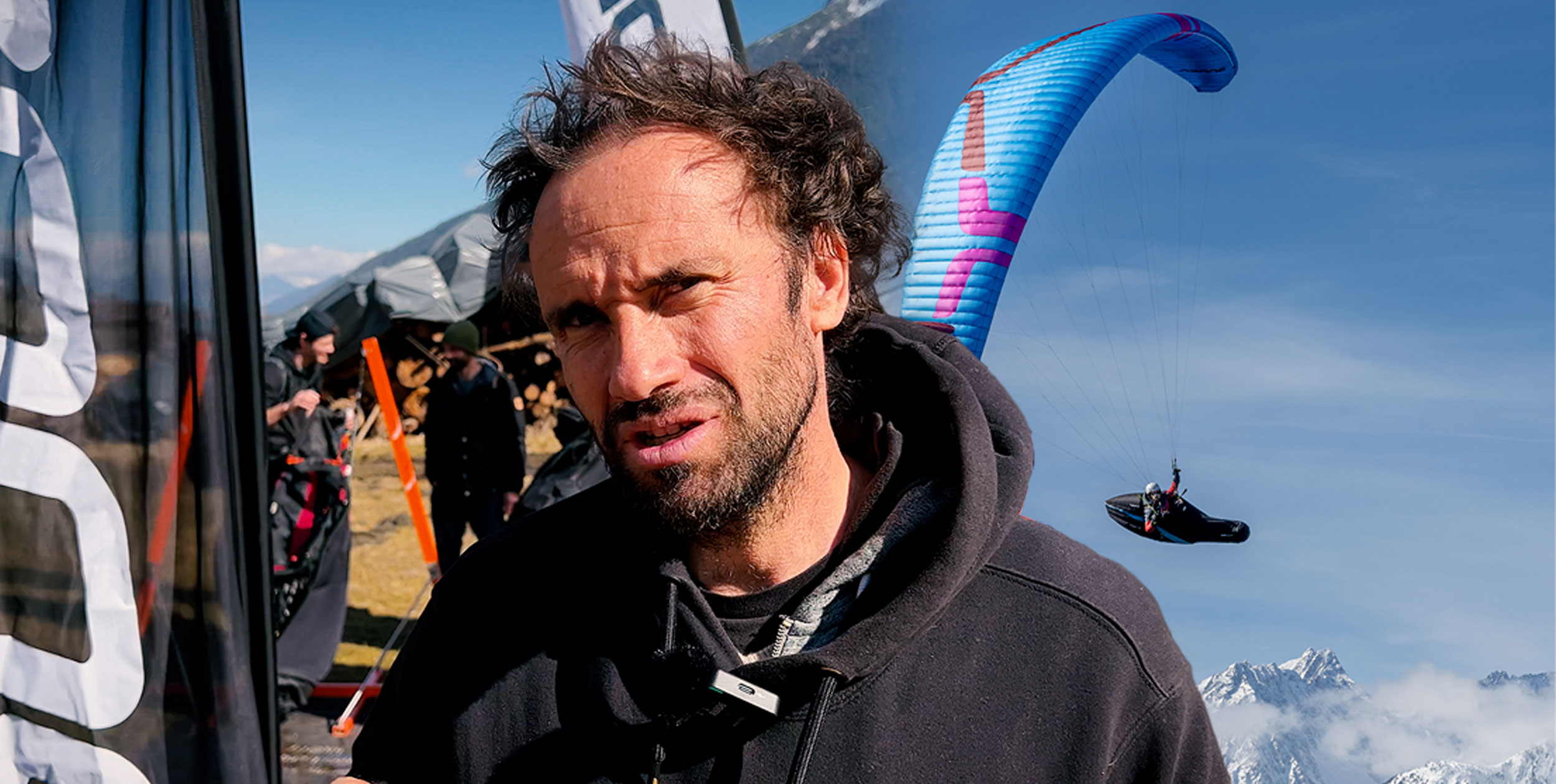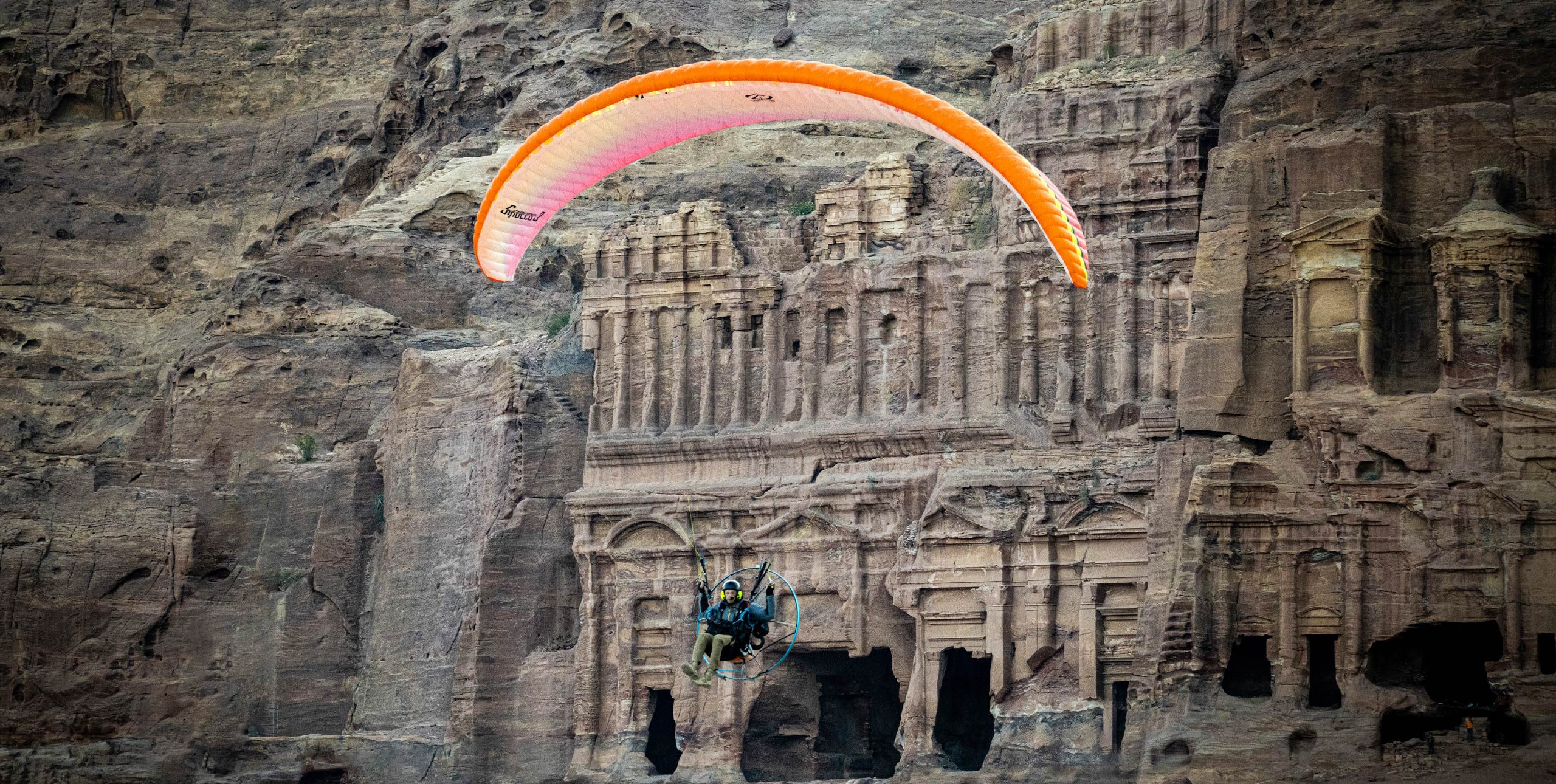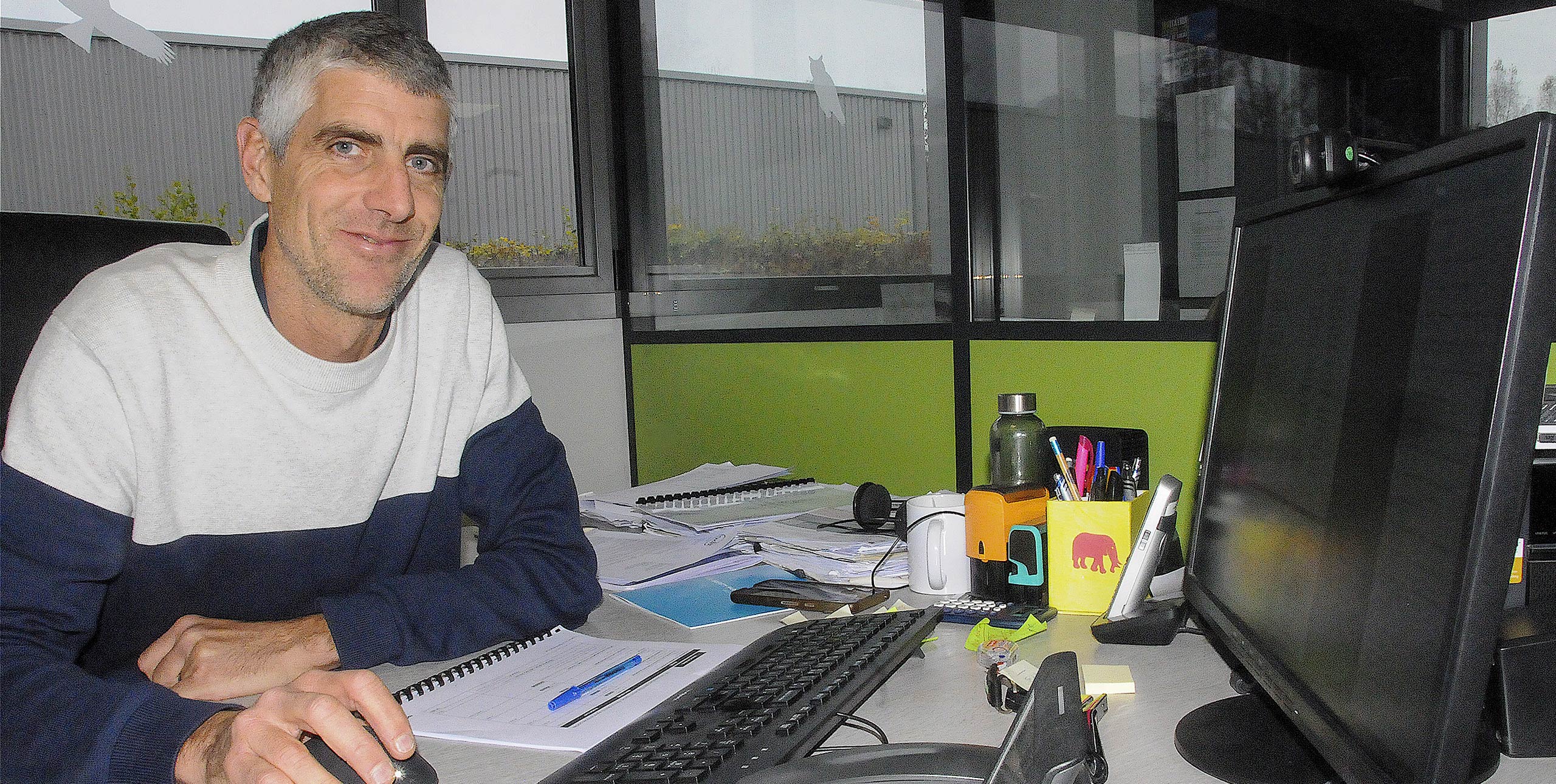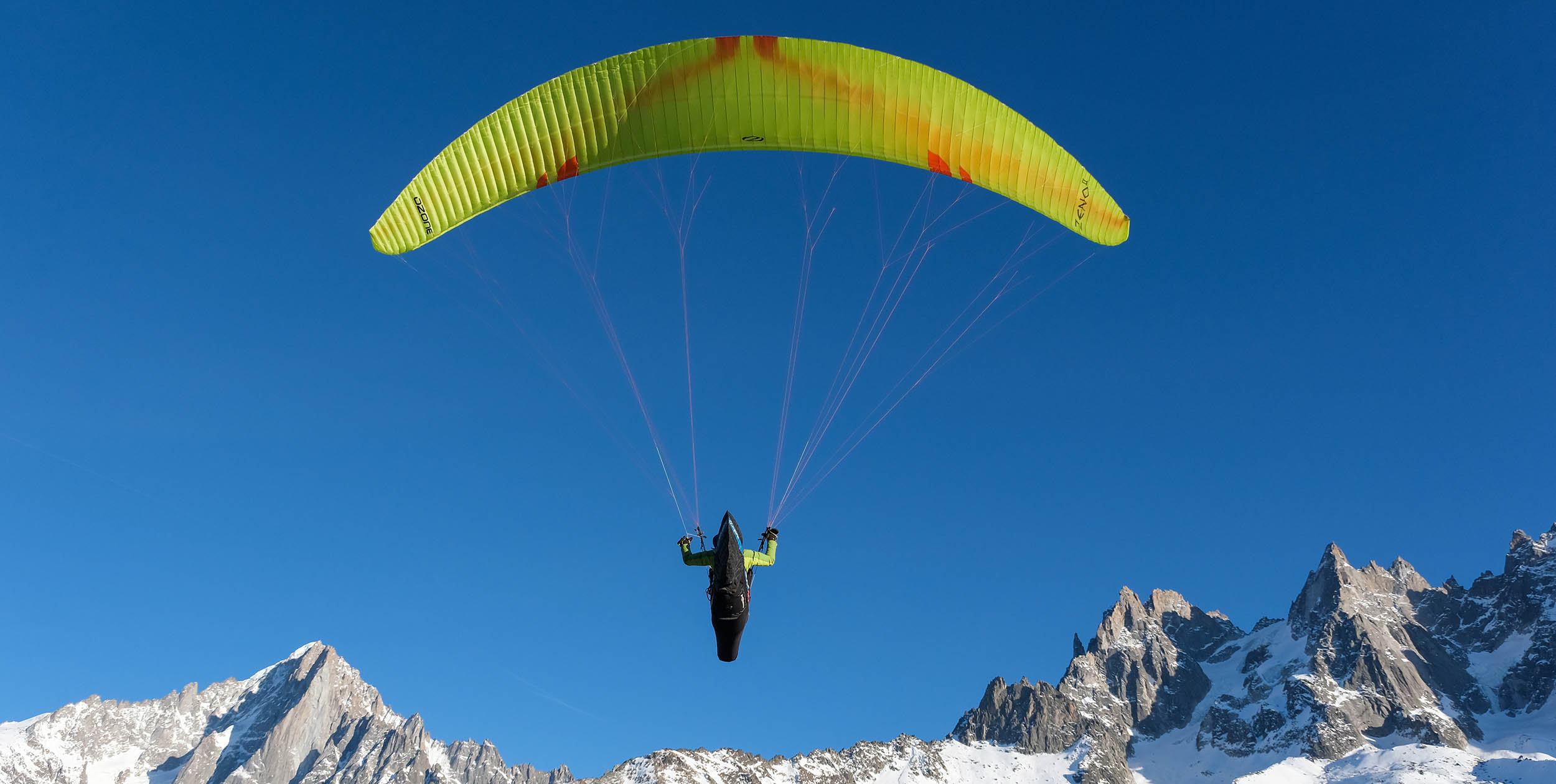
Hugh Miller flies the Zeno 2 MS (85-100 kg) for his upcoming review in Issue 230, out soon. This is a pre-publication draft for Cross Country subscribers.
We never get conditions like this in March. I’m pressing out as much speed as I dare, chest-strap tightened at 5,400ft (1,650m), gliding as hard as I can upwind under a strong street. My Oudie’s lift tone is screaming interspersed with “airspace, airspace” voice warnings. To be honest, it’s all a bit much. I wonder how I got here, flying a small triangle on the first epic day of the year, in my usual state of excitement-fear-excitement-fear.
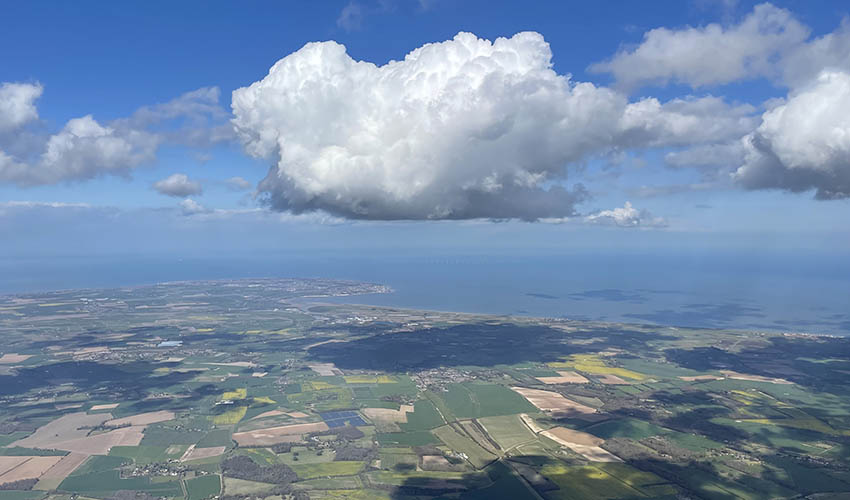
If you could imagine the opposite of Honorin Hamard – it’s me. While Honorin is the confident, young tanned French world no 1 who raced his Zeno 2 to not one but two victories in Colombia, I am a tall, pasty-skinned, slightly socially awkward Brit with an over-active pituitary gland whose 45 year-old heart much prefers the serenity of gentle cross countries to red-line racing in world cups.
To further evidence my qualifications as ‘regular pilot’ I haven’t done any SIV or stalls since 2017 and – like many of us – my flying dropped right off during the pandemic. So, I feel incredibly lucky but rather daunted by the task of reviewing the Zeno 2. Go easy on me!
In terms of wings of this ilk, I have flown and reviewed the Zeno, Zeolite, Leopard, Meru, Enzo 3 and M7 over the past five years. I hope my first 15 hours on the Zeno 2 MS gives you some idea as to what to expect – whether you’ve pre-ordered, or not.
This is a ‘pre-publication’ draft of my review. The final draft will be out in Issue 230, when I’ve done something like 25 hours with the wing – if you’ve snuck on here without subscribing, welcome, and do consider subscribing if you’d be so kind and read it when it’s out in May. We rely on the generous support of subscribers across the world to keep the magazine presses rolling.

ON THE GROUND
In a side-by-side comparison the Zeno 1 and Zeno 2 look pretty similar. They share the same line layout scheme and aspect ratio and also a very similar planform. The first obvious difference is a more prominent shark nose. The cell openings are set 3-6 cm further back, and they’re slightly bigger. This more classic sharknose profile, combined with increased CM+ (reflex), gives it a more Enzo 3 / R11 flavour on the ground – but obviously it’s much more manageable with its reduced aspect.
My test wing had some small holes in the leading edge which looked like they’d been made by a holepunch and some sticky marks and felt-tip markings for development testing. Hopefully yours won’t have those – but the production model does feature neater tabs and holes for SIV collapse lines. The butt holes make a return, too.
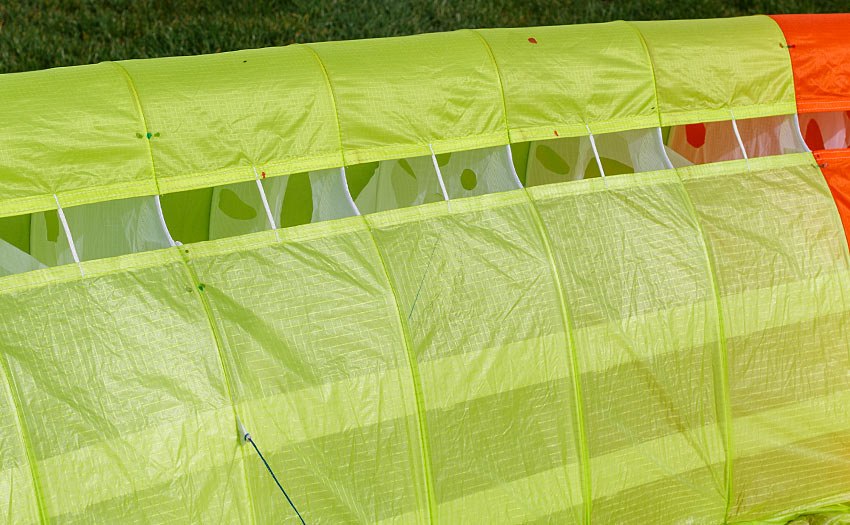
The Zeno 2 also features new risers with new handles, and magnetic keepers – all very nice. I’m not enough of an engineer to give any reasonable insight into the internal structure, but it looks to have been lightened even further, benefitting from Luc Armant’s skills in weight reduction honed in the Zeolite series.
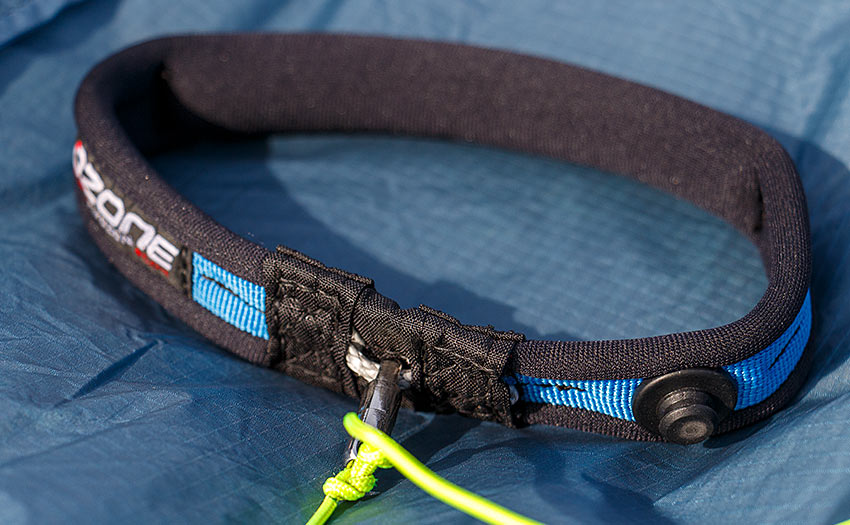
In terms of launch behaviour, this is a sorted wing – from nil to strong winds. On a near-blown out day, I groundhandled the wing 100m along the crest of a ridge with lots of bushes and mounds creating turbulence ahead of me. The wing responded well – reminding me of the rock-solid R11 but with less span to manage. In nil to light wind, it came up perfectly in forward launch – no speedy tips, no delays, no drama. Easier than the Zeno 1.
ON THE BRAKES
Once in the air, the wing immediately feels coordinated and sporty. The brakes are more direct – a little firmer and more responsive than the Zeno 1 and shorter (obviously!) and more precise than the long-travel Enzo 3. With the Zeno 2 it feels like you get an immediate grip on the wing (like getting tension on a dog’s lead) from the first few centimetres of travel, whereas with the Enzo 3 you get very little initially. That immediate grip – which reminds me of the Leopard – then becomes proper, workable brake range, with a nice linear build in pressure. It makes for enjoyable handling.
ZENO 1, LEOPARD AND ZENO 2 FEEDBACK
My one gripe with the Zeno 1 was I sometimes didn’t quite know which way to turn when entering a climb. And I know I’m not alone here. When I mentioned my experience of the Zeno 1 as lacking the ‘sniff’ and ‘pitch-and-lift’ feel of some other Ozone wings, one of the test team said, “you can’t have everything!” They thought that the Zeno 1 was an excellent compromise, offering incredible performance in an accessible package. They were right, and that was 2017. But over the years, many pilots have commented that the Zeno 1 can feel a bit plank-like (I know… harsh, but fair) – particularly when it starts going out of trim and starts ‘hanging back’ a bit.
Not having that sniff or feel means you can often just not know which way to turn – is the core to the left or right? It’s like driving a car with a fogged-up windscreen in winter, trying to peer through a small clear gap in the middle. It’s not the world’s biggest criticism to make of a glider but feedback can make a wing so much more fun.
For me this is where the Leopard wins over the Zeno 1. It provides lots of feedback through the brakes about which side the lift is on. A friend who has over 150 hours on both the Zeno 1 and Leopard, puts it like this. “The Leopard makes you feel like you can ‘catch’ the thermal under one wingtip, or follow a lift line like walking a balance beam, feeling which side is lifting more.”
It’s too early for me to say if the Zeno 2 is as informative as the Leopard but it is definitely a more informative wing than the Zeno 1 – perhaps because of its sharkier nose – and also because it stays more ‘planted’ than its predecessor. Let me try and explain what I mean by this.

CONSISTENCY IN PITCH
Firstly, as you enter a thermal, the wing stays consistent in pitch – with just a very gentle pull forwards on the leading edge as the climb improves. This consistency – the lack of being knocked back and forth, if you like – means you can tune in to what the air is actually doing, rather than how your wing is being shunted about by it.
At 5kg below the top of the weight range, this characteristic was complemented with better feedback through the brakes as to which way to turn. However, there’s a little less information on the brakes when fully loaded to the top of the weight range.
CONSISTENCY IN ROLL
Secondly, the Zeno 2 banks consistently and stays locked in pitch and roll right round the 360, whereas the Zeno 1’s leading edge likes to leap forward, requiring frequent outside brake management in livelier thermals to catch the dives – not giving much insight into what the thermal is doing, but requiring lots of input.
Annoyingly, I also found the Zeno 1 liked to straighten up at inopportune moments right when I wanted to stick a tip in and wang it round. This might be because the Zeno 1 was flatter across its span – the Zeno 2 has more arc.
With the Zeno 1, some pilots described having to ‘relearn’ how to thermal: this won’t be an issue with the Zeno 2, which just stays rotating, needing very little outside brake movement. This gives a more relaxed, smooth climbing experience, but also means that when the leading edge is drawn this way or that, you can have more confidence in going with it.

TIP COLLAPSES – BUT NO DRAMA
I did have a couple of tip flutters with five or so cells closing when entering a couple of climbs (where the Zeno 1 was rock solid) but it’s really nothing to mention – it felt like in both cases it was caused by loss of line tension from inadvertent roll that might be resolved with more solid cross-bracing on your harness.
ENZO 3 VS ZENO 2 FEEDBACK
If you’re one of those Enzo 3 pilots tempted by a Zeno 2 because you don’t want to be overtaken, you’re going to have to work on your listening skills. I’d imagine it’s what life must be like for my Mum having to turn her hearing aid up when she’s with someone who talks a bit quietly. The Enzo 3 is just incredibly informative – perhaps due to its higher aspect ratio – and unbeatable in the weak stuff. It’s like having a co-pilot whispering secrets in your ear.
In terms of where you get your information from, I’d say it’s a mix of the risers (and seatboard movement) and brakes – it’s very balanced. All in all, it feels like a very solid, dependable friend – really not much to surprise the highly competent C or D pilot – when thermalling and flying on the brakes.
MUSHING IN
The glider tolerates deep brake input, meaning you can flap and mush in when landing in a tight spot with confidence. This is a great characteristic in terms of safety, helped perhaps by the pronounced sharknose which gives better behaviour at high angles of attack. It’s certainly not vague in telling you where the stall point is – and you reach it very progressively.
ON THE B’S
When Seb Ospina and I tested the original Zeno (video at the bottom of this article), Seb shot a video of himself thermalling just using the B’s. Pretty revolutionary at the time. The Zeno 2 is even better. You can hunt about, zigzagging into lift using the B’s, before even doing your first 360 on the B’s (if it’s not too rowdy), then switching to brakes. Obviously the wing flies faster like this, but the B’s are light enough to do this comfortably and this technique works really well in waftier conditions.
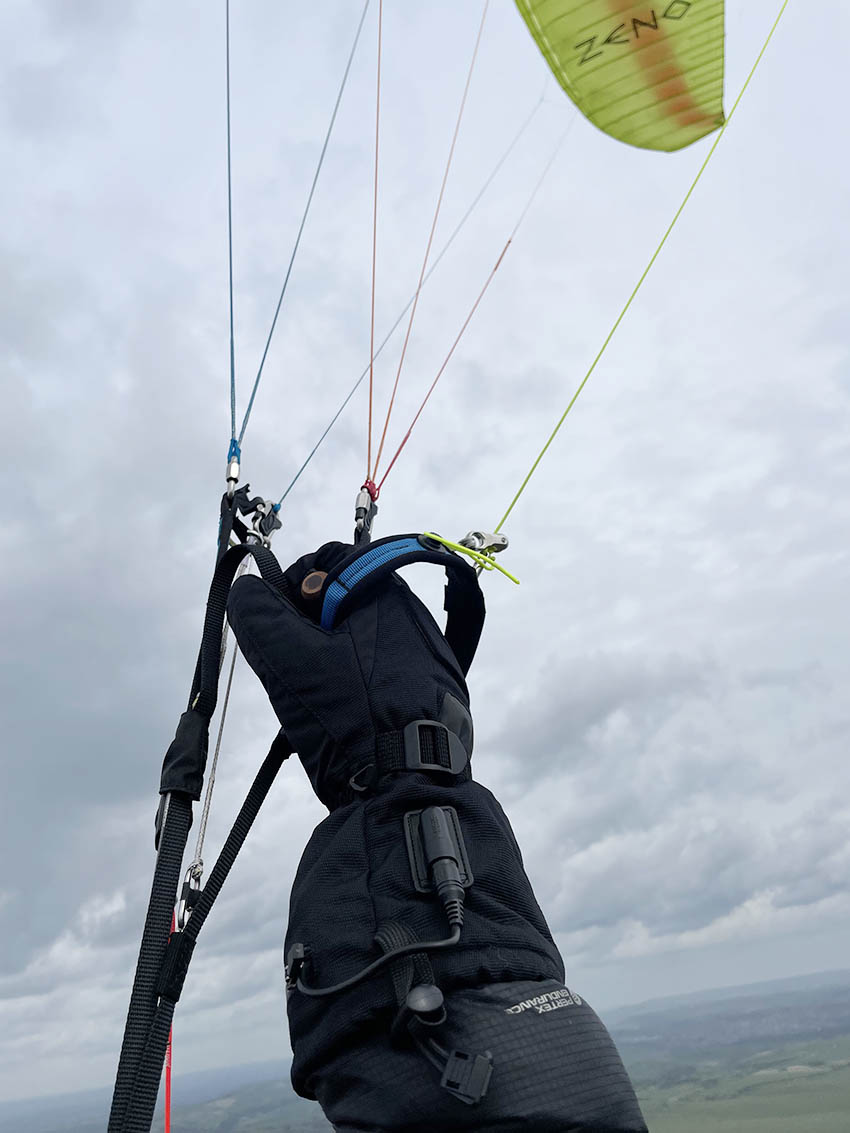
ON THE BAR
When setting off on glide, with the first squeeze on the first step of the bar, there’s a lovely immediate acceleration, and you get that nice ‘I’m in control here’ feel that only two-liners give as you grab the B-handles and feel the air whistle past.
Push further, and moving onto the second step of the bar, the Zeno 2 progressively becomes a gruntier, snakier, racier wing. I needed to tighten my chest strap to reign in some of the roll and movement of the wing. My Impress 4 just has a standard waist strap for this – it’s not really enough. I missed the lock-in, lock-of cross-bracing mechanisms of harnesses like the Woody Valley XR7 and Kannibal Race 2 which will come into their own with this wing.
Paragliding World Champion and Ozone test pilot Russ Ogden told that this wing needs more looking after than the Zeno 1 when pressed over half-bar – I’d agree. The Zeno 2 wriggles a little, and looking up it’s as if the line groups react slightly individually to the chunks of turbulence they absorb through the wing.
PUSHING THROUGH CLIMBS
Pushing bar right into, through and out of strong thermals and dolphining along long sections of lift, trying to accelerate and ‘dive’ the wing in sucky air to escape being pulled into cloud… I think this is an excellent way to test the punch and solidity of a wing, and how it handles the turbulence it’s thrown.
Obviously it requires lots of management on the B’s and also through the seat, keeping your legs locked and pushing your knees out sideways. But overall the Zeno 2 performed well – though the harness style matters. I think most pilots will much prefer to fly the Zeno 2 with a solid seatboard competition harness. I’m sure you could fly it with a lightweight hammock pod if you’re not a regular caner on the bar… but that’s kind of the point of this wing!
Incidentally, one reason you can fly a Zeolite or similar lightweight two-liner with a light hammock harness is because of its lower aspect ratio. With an A/R of 7 to manage, many pilots prefer the authority and spanwise damping that a seatboard and better cross-bracing gives you to fly safely at speed. It just makes for a more comfortable ride. And of course a good fairing will help keep you weathercocked into wind – it’s so frustrating having your pod getting shunted diagonally when flying on bar, which happened all the time when I flew the Zeno 1 with a Forza.
THE B’S ON GLIDE
On glide, feedback on the B’s remains good – it’s maybe a little more communicative and faster to respond than the Leopard and definitely lighter on the arms, too. This indicates there’s less loading on the B’s, and more of the loading on the A’s, of course (where you want it). But it’s not as light as the Enzo 3 or Zeolite. The glider reacts quickly to inputs.
I think a lack of currency led to my wing getting shunted sideways on occasion and I only had one moment of seeing some tension go in the leading edge, but even with my sloppy skills, pulling the B’s corrected the wing’s pitch quickly enough to check the dive. All in all it’ll be fairly intuitive to established two-line pilots. But again, I missed having good cross-bracing on my harness.

SPEED
I felt dialled in enough after five hours or so of flying on bar to start pushing close to, and touching, full speed. The first time, I was gliding under a strong street, trying to escape cloud suck alongside a friend on an Enzo 3. He told me later he was on full bar and I slowly pulled away. No big shocker given the competition results we’ve seen, of course.
But according to Ozone, the final 2-3cm of travel between the pulleys are designed for world cup pilots diving for the bar, or pushing for a 10m/s climb in properly epic conditions. They’re not for ‘general use’. Obviously as speed increases, energy increases exponentially – the glider will require competition-pilot level control if pressed into the red.
Later, after about ten hours of flying, I had a drag race with a friend on a freshly-relined Zeno 1. With the Zeno 1 accelerated at top speed, the Zeno 2 still had a third of travel left to go. It’s like the Zeno 2 has an extra ‘warp factor’ button built in.
At this stage, I’d be happy to say it’s 4 or 5 km/h faster than the Zeno 1. Ozone claim 7 km/h measured with GPS and for the final review I will do more testing with a Flymaster TAS probe which measures IAS using a pitot tube – more on this here. So for now I’d happily stand up in court and state the Zeno 2 has a 9% increase in top speed on the Zeno. But please don’t make me go to court. I wouldn’t like that.
WHERE IT FITS
One question some pilots are asking is whether the Zeno 2 make three-liner D’s obsolete. I don’t think so. If it were a boxing match, for my money, a wing like the Omega X-Alps would stand a better chance of knocking out a three-liner D – because it’s a more accessible wing.
Perhaps a brand will come up with a standard-construction 6.5 to 6.7 A/R EN-D that benefits from the rigidity of a stronger internal structure – and this could be the ultimate step into the world of two-liners. Equally, it’s too early to say, but perhaps the real threat to the survival of three-line EN-Ds comes from the exciting emergence of the new EN-C two-liners (the Volt 4 is A/R 6.5, with one size certified at time of writing).
But for now, a 6.5 A/R three-liner like an M7 continues to be a different class of wing in many ways from the 6.9 A/R Zeno series. Nothing in my initial flying of it would say that the Zeno 2 makes the three-line D’s obsolete – there are critical differences in demand and handling, particularly at speed. And of course pilots move both ways across classes. Some pilots will move from a two-liner to a performance D for very good reasons – including overall comfort across a range of conditions.
Equally, while clearly highly competitive, the Zeno 2 doesn’t make the Enzo 3 and other CCC wings obsolete because in weak conditions, higher aspect competition wings will have the edge. If I had an Enzo 3 I wouldn’t be rushing to sell it just because I’d seen the world number one win a couple of competitions with a different wing and an incredibly aerodynamic harness.
LOADING
In terms of loading, it felt great in the strong stuff at 99/100kg. But I missed a bit of feedback, and found the wing a bit ‘divey’ in weak low saves (I didn’t get up, so I would say that!). The wing digs in to the 360 and the handling feels at its sportiest when fully loaded – perfect for cranking up close to those mountain cliff faces (while hyper-ventilating, if you’re anything like me).
I also tried it at 96kg, and found it much, much nicer when looking for climbs – it just tells you so much more. The handling’s a fraction softer, but acceptably so and it seems more ‘nose up’ entering climbs.
I’m saying this with 50% certainty as I haven’t yet flown it at 90-94kg, but my hunch is an ideal hook-in weight would be 93-96kg, with the option to add 4-7kg of ballast. Then, if you’re lucky enough to launch into the boomers and set off for an epic eight-hour XC, there’s the option of dumping your water in the late afternoon and taking advantage of what may will become a slightly floatier, sniffier wing. This ‘five below the top’ suggestion matches the 105kg weight that Honorin Hamard flew the ML in Colombia at, too. Personally, I’d be happy flying the MS at 96kg in the UK (while trying to lose a little of the lockdown-living waistline).

CONCLUSION
I am constantly surprised by Ozone wings. With the M6, LM5 and Delta 2 of the early-mid 2010s, I found a reassuring homogeneity in their characters, feel and feedback. Each wing I’ve flown since then has felt a little different – whether it’s the rigidity of the Delta 3, the muted feedback of the Zeno 1, or the absolutely delightful sniffiness of the Enzo 3 – there hasn’t been as much common ground. The Zeno 2 is different again – but in a good way. It feels like it’s all coming together. It most reminds me most of the Zeolite in terms of its handling and climbing characteristics – but it’s much more refined, solid and smooth all-round.
The handling on brakes – dare I say it – feels a little like an Advance glider. And on speed, it will be the kind of glider you want it to be: from a slightly accelerated, highly efficient XC machine, right through to a “are you sure you want this much speed?” highly potent competition winner (though it might cause you a few worry wrinkles).
To be honest, I wonder if the extra speed is mainly a kind of “we’ve got you covered, punk” feature designed to ward off any future competition trying to outgun the Zeno 2 – given the Leopard seriously out-paces the Zeno 1. On that note, the Leopard was around 4km/h faster than the Enzo 3 in our testing – someone needs to do a Leopard vs Zeno 2 drag race as it’s going to be close!
There’s a rumour going round that the Zeno 2 is somewhere between the Zeno and Enzo 3 in terms of pilot demand. I’d politely disagree, while acknowledging it’s early days and I only have 15 hours on it so far. It may be a fraction busier on bar, but actually it’s an easier wing to thermal. I can’t comment on SIV because I haven’t done any – but from what I’ve found so far, a competent D pilot isn’t going to accidentally spin this wing or get in any trouble, as long as they’re cautious and progressive about their use of the bar up to and beyond the original Zeno’s range.
In fact, I’m sure those that have placed early orders will be delighted by what arrives through the post, but how about for those that can’t afford to? Honestly, all the 7.0 AR EN-D two-liners I’ve been lucky enough to fly are still absolutely brilliant wings for 2022. I think two-liner glider development is now about refinements over a five-year cycle, and I think it’s fair to think about the Zeno 2 as a great upgrade rather than a completely new creation (in the way the original Zeno was). It’s like going from an iPhone 11 to an iPhone 13 Pro.
The Zeno 2 is nicer to fly, is a little more intuitive, glides better at speed, and goes quicker – so it’s a good investment if you’re thinking of competing in the next two or three years. But meanwhile, make good decisions and take good lines on your current wing and those flash Zeno 2 pilots and their cash won’t get away – in fact you’ll probably have the last laugh.
Until they push their bars and dive for the line, that is.
P.S. if you do get a Zeno 2, try not to land halfway down the hill after everyone’s climbed out, like I did. You feel a bit stupid.
Hugh has flown the MS Zeno 2 for 15 hours in thermic spring conditions so far, including a 125km XC. The final review will be out in the next issue of Cross Country after another 10+ hours of flying.
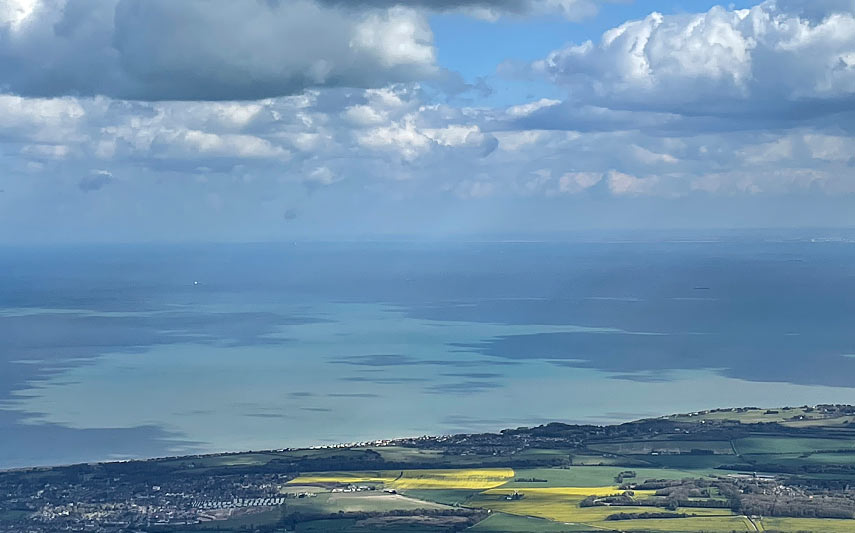
[promobox]
You may also enjoy our video review of the original Zeno, below.



